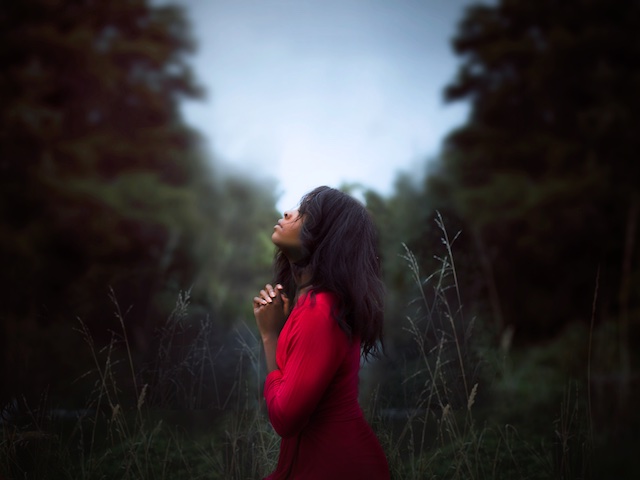
Our pain has the ability to back us against the wall and show us what matters and what doesn’t.
But when we test this stuff out in real life, ideals quickly become totally eclipsed by real feelings, real confusion, and real disgust at how life temporarily rains down its tests. Indeed, “bad experiences leading to good” is a paradoxical notion for the ego. That is, until it meets with enough evidence to prove them true…and perhaps even embraceable.
What if we could create that evidence ourselves, instead of having it thrust upon us as a big surprise? What if we could convince the ego that it’s worth voluntarily visiting what is less glamorous for the sake of deeper fulfillment?
Here’s an organized brainstorm aimed at that effect.
A couple times here now in Koh Samui—while studying breathwork, chanting, asana, philosophy, holistic health, and all matters of personal evolution at Samahita—I have found myself directly in the aftermath of a near-death experience.*
You could say I am exaggerating, but when was the last time you met someone who unsuspectingly skipped straight through a glass door (later spending hours at the hospital getting glass picked out of her limbs, feet, and hands) miraculously sparing her face, neck, torso, and major blood vessels?
When was the last time you heard about the same someone accidentally letting go of a motorbike as it plummeted over a steep cliff, flying through tree branches grazing (and scarring) her neck, hitting a rock, and cracking her helmet and metacarpal? All this before standing up to send a message to her friend on an unscratched iPhone.
These experiences were close enough to death to provide a sound context for practicing the things I do and suggesting that others consider them on a regular basis. Because, perhaps ironically, they were what it took to bring me further into my body, and thus my life, than I had ever been previously.
This is embodied soul.
“What is she talking about?” you may ask, assuming I have always been in my body, that you have always been in your body, or that everybody is always in their own bodies.
Well, I would like to propose that we take for granted the fact that everyone is living completely in their body. Because, frankly, a lot of times, we’re—at least in terms of our attention—very much not there.
The body itself is present. Absolutely present. In the moment. It has zero choice about this fact. It requires immediate air, time-sensitive food, fresh water, and the presence of others to survive. The mind itself can travel “through time” on the frequency of the imagination—to patch-worked fragments of the past, or to a future based on rearranged fragments of that same past. The mind’s factory “default settings” is to do this. It’s our survival mode.
There are many reasons survival mode remains the choice for so many on this planet—people argue it’s because of our modern world and the digital age. And I agree with that, in part, but only so far as to say this is a symptom of the underlying problem. The truth is, it’s never really been fashionable to be out of control and vulnerable.
Which is to say: Centering in the present moment implies letting go of certainty about external reality in exchange for awareness and inner connection. This runs counter to an ego that pumps the slogan: “I am in control of how my life is going and will go at all times.”
Is there anything more ridiculous? Really. Yes, control is possible, but only when we know who and where we are in space and time can we really enjoy the experience of its bounty and limits in our lives. We share this world with almost eight billion other people. That anything happens to our expectations is a miracle worth considering…until we consider our expectations may be implanted by a system that delivers them as a matter of addiction-causing course. By contrast, clinging tightly to every single one of our own little expectations is a recipe for insanity. Because unless we allow the unexpected and embrace the uncertain, we can’t more fully appreciate the growth resultant from these two inevitabilities.
Nature just is.
Can you see how our human tendency to systemize ourselves out of vulnerability and “the unexpected” causes disconnect? We’re born into this ever-present body only to fixate on a reality that is imaginary. We live in a world where temptation to escape our present experiences surrounds us to an increasing degree. It’s worth it to consider that 200 years ago people were much more in touch with nature’s rhythms, even if they didn’t have the luxury of time to reflect on this fact so much as survive it.
But now we do.
When I speak with people here at Samahita, I find the conversation often travels to nature—to how healing it is—how restoring it is. Considering the topic underway, it’s not a stretch to imagine why. Nature, animals, plants, snails inspecting blades of grass, freshly fallen white frangipani, the motion of the sea, the sound of geckos and boisterous birds—all of these are perfectly present. Nature is not neurotic. It just is…as it is. The catharsis of spending time in and pointing our focus toward nature is utterly healing.
So too is the healing power of spending time in and pointing our focus toward our body and breath. These are the foundations of each of our own natures—these are as wonderful, mysterious, rhythmic, and wild as all of the glories of a tropical environment. Actually more so, because they are so intimately ours, and so similar across all beings as one goes deeper.
Can you see why a near-death experience, an illness, a catastrophic loss, or an accident would bring one closer to who we are fundamentally? Indeed, these events bring us face to face with our limits. They reduce the chatter of the mind and bring us firmly in the moment to deal with the task of recovery and healing.
Creating conditions for connection.
Don’t get me wrong, I do not wish these experiences on others. But when you think about it, any time your life changes drastically, you have a kind of near-death experience because so much of what you identify with disappears. You are somehow reduced to the basics of who you are—without the partner, without the job, without the house, without the status, designer shoes, or friends. (Can you tell I’ve been through this?)
Indeed, a lot of those who have embarked on the spiritual path really get this, because practices of developing the inner world tend to spark a domino-effect of changes in the rest of their lives. In a recent lecture on Patanjali’s Yoga Sutras, my teacher Paul Dallaghan said: “Spirituality is a classic case of being grounded. Start by getting grounded.”
What we need, essentially—and what he has experienced deeply—are techniques to bring us into our bodies and breath on a daily basis and in a voluntary way. With dedication to these techniques, we take steps in the direction of our true nature through increasing experiences of presence. We connect with the present moment with all of our faculties, and thus, all of nature and the wider universe exactly as it is.
Meeting the process halfway.
Instead of being brought to our knees by trauma, we can come to the ground by choice, in a comfortable seated position. It’s not going to happen after one or two times, it takes years. It takes less for those who can “become one with it,” as Paul says. “It” meaning every second and sensation of practice.
As U2 famously chants: “If you want to kiss the sky, better learn how to kneel.”
.
*Author’s note: Although I have had these two experiences, Samahita remains a place I return to for study and practice as well as a deeper sense of connection. I don’t know another student who has had such experiences in or around this safe and peaceful retreat center. I encourage people to visit as a way to meet themselves in a deeply calm state, perhaps for the first time.
~
~
~
Author: Emily Alp
Image: Diana Simumpande/Unsplash
Editor: Danielle Beutell
Supervising editor 1: Yoli Ramazzina
Supervising Editor 2: Catherine Monkman


 Share on bsky
Share on bsky




Read 0 comments and reply